Welcome to my Complete Pothos Care Guide for Beginners. If you’re looking to learn how to care for your Pothos plant and help it thrive, you’ve come to the right place.
Pothos plants are not only easy to care for, but they’re also incredibly beautiful and have air-purifying abilities. In this guide, I’ll provide you with all the essential information you need to know about Pothos care.
What Is a Pothos Plant?
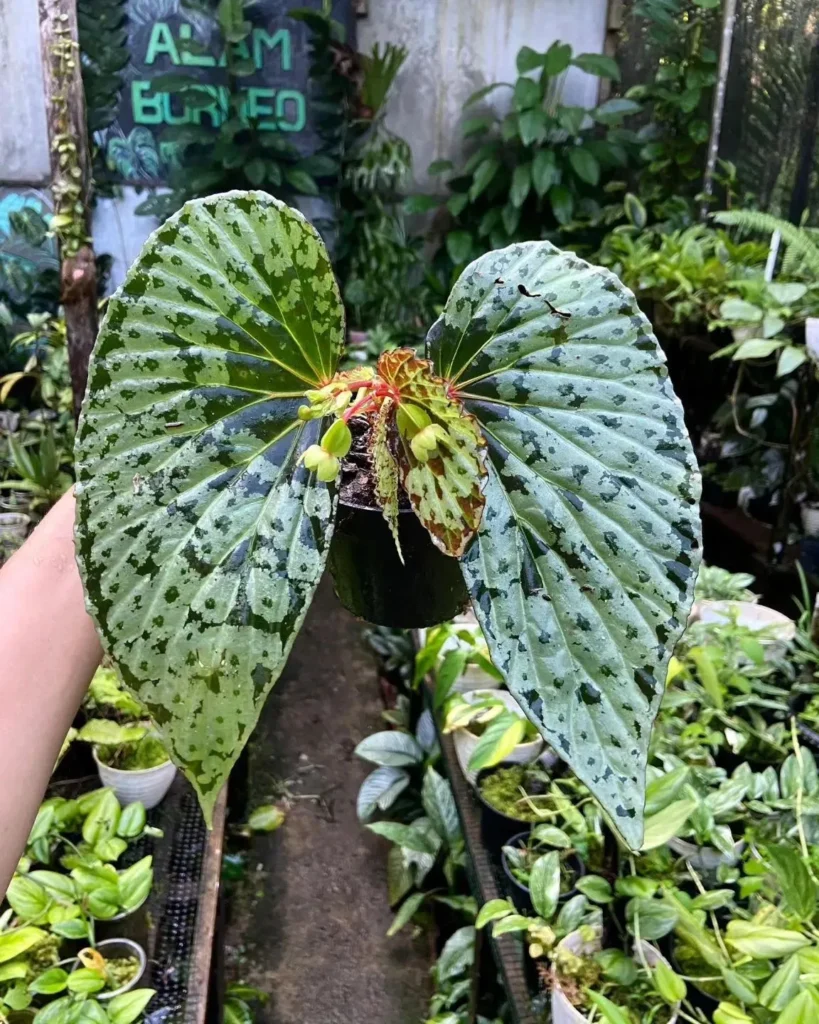
The Swiss cheese plant, scientifically known as Monstera adansonii, is a popular indoor plant with large, heart-shaped leaves. It is a tropical perennial that is typically grown as a houseplant. The plant gets its name from the holes that develop in its leaves as it matures. Swiss cheese plants are fast growers and have a vining habit. They are commonly grown from young nursery plants and can be potted at any time. It’s important to note that all parts of the Monstera plant are toxic to pets.
Golden Pothos
Appearance: Golden Pothos, also known as Devil’s Ivy, features heart-shaped leaves with green and yellow variegation. The leaves have a glossy texture and can trail or climb when grown as a vine.
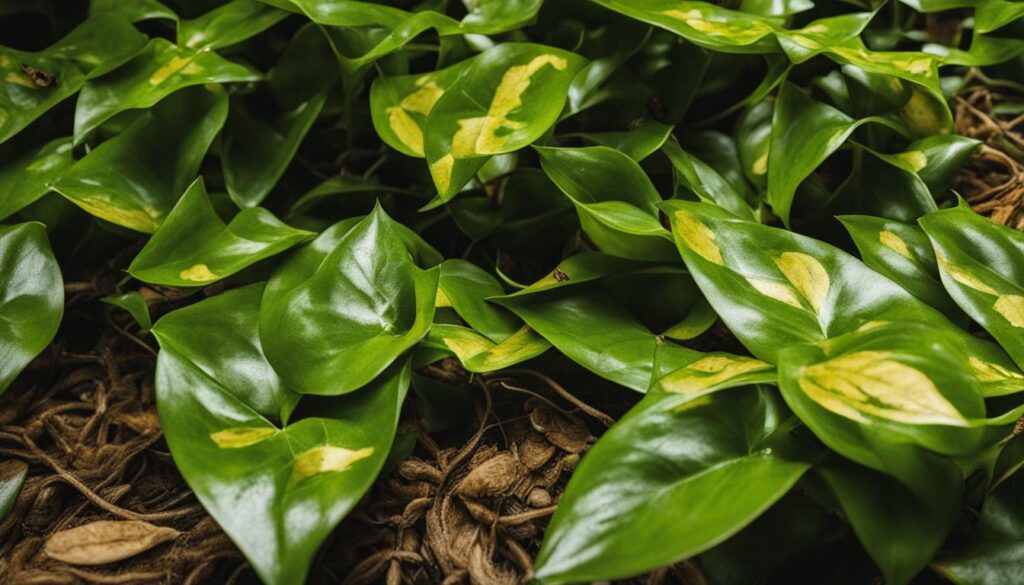
Rarity: Common and widely available in the houseplant market, making it a popular choice for beginners.
Why People Love This Plant: People love Golden Pothos for its low-maintenance nature, air-purifying qualities, and the striking contrast between its vibrant green and golden-yellow foliage.
Care Specifics:
- Light: Thrives in bright, indirect light but can tolerate low light conditions.
- Water: Allow the top inch of soil to dry between waterings.
- Temperature: Keep it in a warm and humid environment.
Marble Queen Pothos
Appearance: Marble Queen Pothos has marbled white and green leaves with a creamy-white hue dominating the foliage. Its leaves are heart-shaped and glossy.
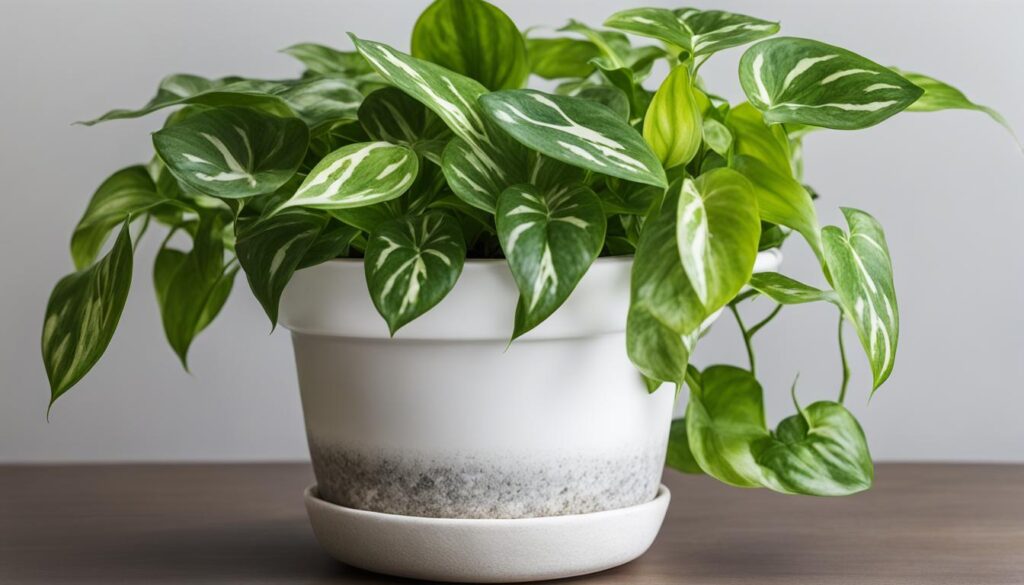
Rarity: Moderately common, though less widespread compared to Golden Pothos.
Why People Love This Plant: People adore Marble Queen Pothos for its elegant and decorative appearance, which adds a touch of sophistication to indoor spaces.
Care Specifics:
- Light: Prefers bright, indirect light, but can tolerate lower light conditions.
- Water: Water when the top inch of soil is dry.
- Temperature: Maintain a warm and humid environment.
Neon Pothos
Appearance: Neon Pothos, as the name suggests, features vibrant neon-green leaves. The leaves are heart-shaped and glossy.
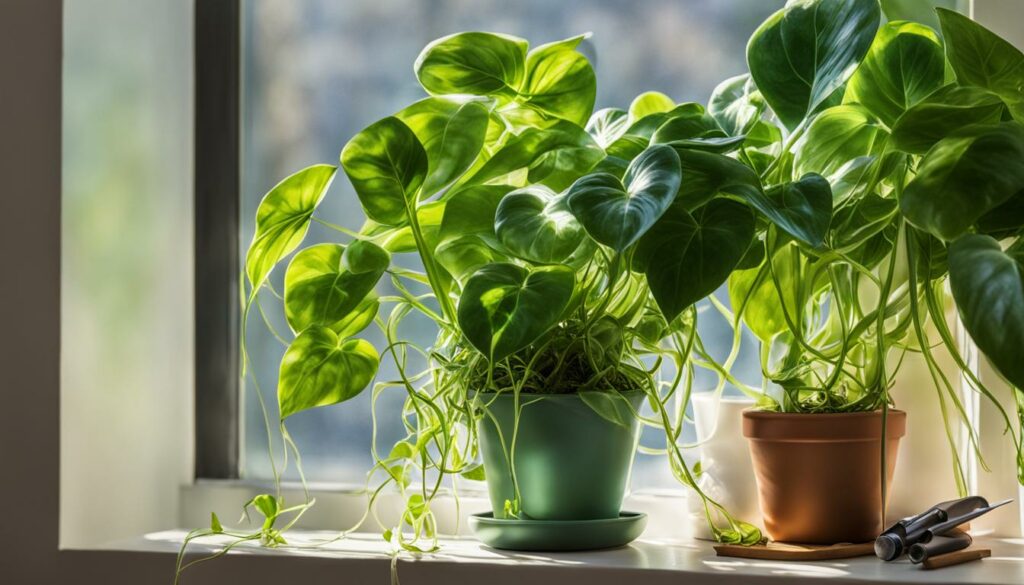
Rarity: Fairly common in the houseplant market due to its striking coloration.
Why People Love This Plant: Neon Pothos is loved for its eye-catching, electric-green foliage that brightens up any room and its ease of care.
Care Specifics:
- Light: Thrives in bright, indirect light but can adapt to lower light conditions.
- Water: Allow the top inch of soil to dry between waterings.
- Temperature: Keep it in a warm and moderately humid environment.
Jade Pothos
Appearance: Jade Pothos features rich, green leaves with a heart-shaped structure. The leaves are glossy and have a solid green coloration.
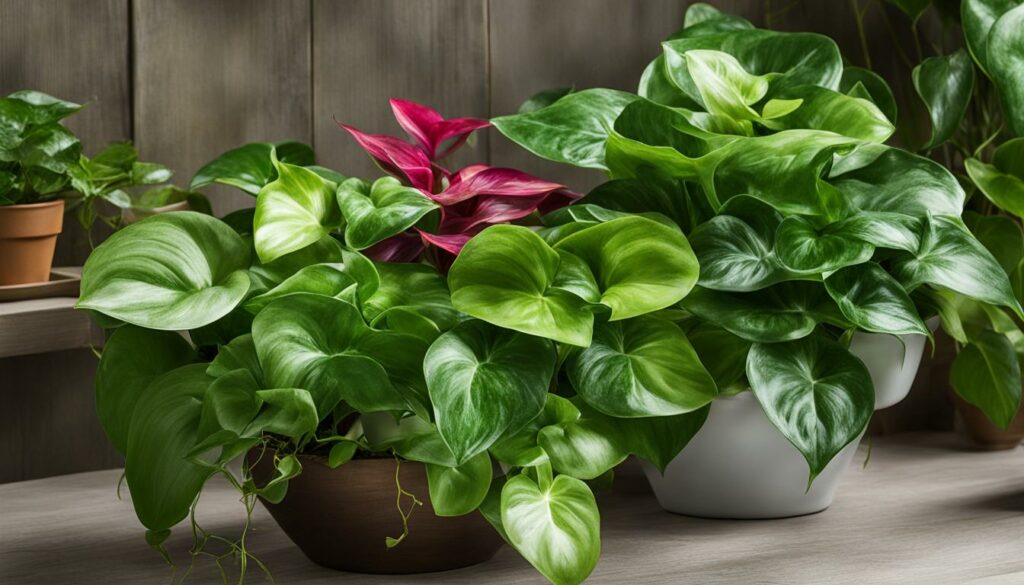
Rarity: Common and readily available in the houseplant market.
Why People Love This Plant: People appreciate Jade Pothos for its classic greenery, which complements various home decor styles, and its durability as a low-maintenance plant.
Care Specifics:
- Light: Adaptable to a range of light conditions, from bright, indirect light to lower light settings.
- Water: Allow the top inch or so of soil to dry out before watering.
- Temperature: Prefers a warm environment with moderate humidity.
Manjula Pothos
Appearance: Manjula Pothos has variegated leaves with green, cream, and silver markings. The leaves are heart-shaped and glossy.
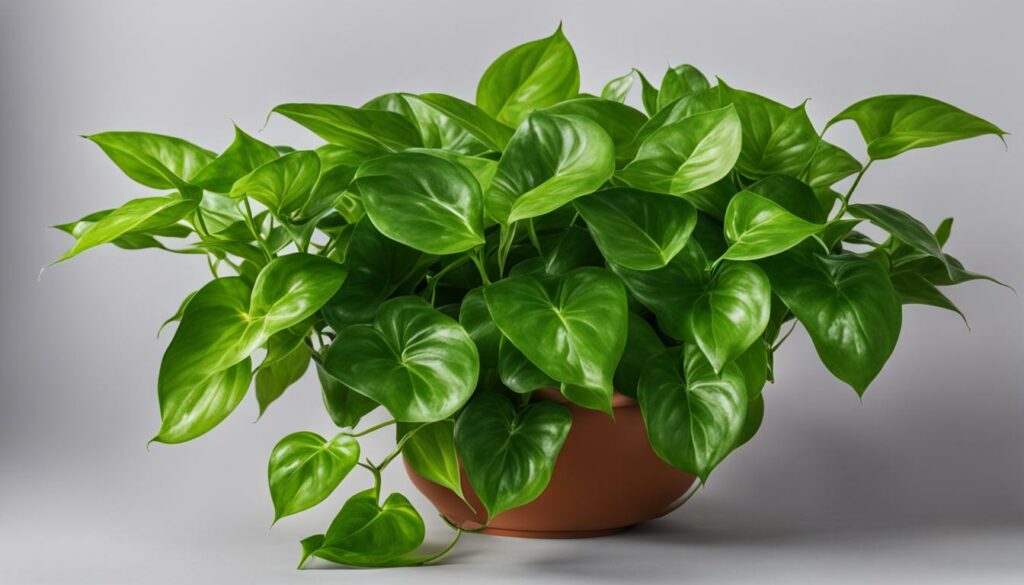
Rarity: Somewhat less common than Golden Pothos but still widely available in plant shops.
Why People Love This Plant: People are drawn to Manjula Pothos for its unique and striking leaf patterns, making it a visually appealing addition to indoor spaces.
Care Specifics:
- Light: Prefers bright, indirect light but can tolerate lower light conditions.
- Water: Allow the top inch of soil to dry between waterings.
- Temperature: Maintain a warm and moderately humid environment.
N’Joy Pothos
Appearance: N’Joy Pothos features heart-shaped leaves with white variegation and green edges. The variegation resembles irregular marbling.
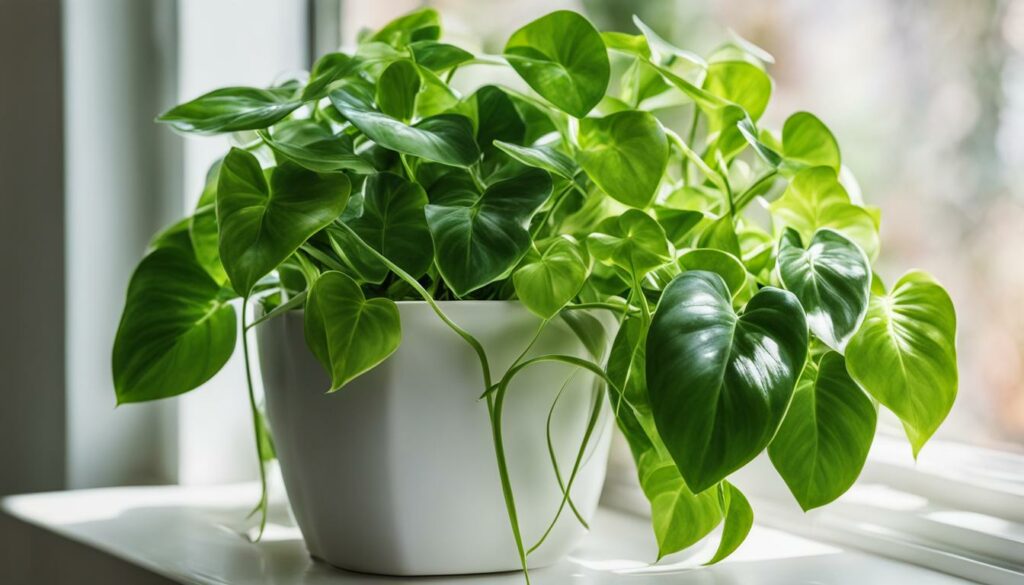
Rarity: Less common than some other pothos varieties but can still be found in plant shops.
Why People Love This Plant: People love N’Joy Pothos for its elegant and distinct variegation, adding a touch of sophistication to indoor settings.
Care Specifics:
- Light: Thrives in bright, indirect light but can tolerate lower light conditions.
- Water: Allow the top inch of soil to dry between waterings.
- Temperature: Keep it in a warm and moderately humid environment.
Pearls and Jade Pothos
Swiss cheese plants come in a variety of species, each with its own unique characteristics. Here are some popular varieties:
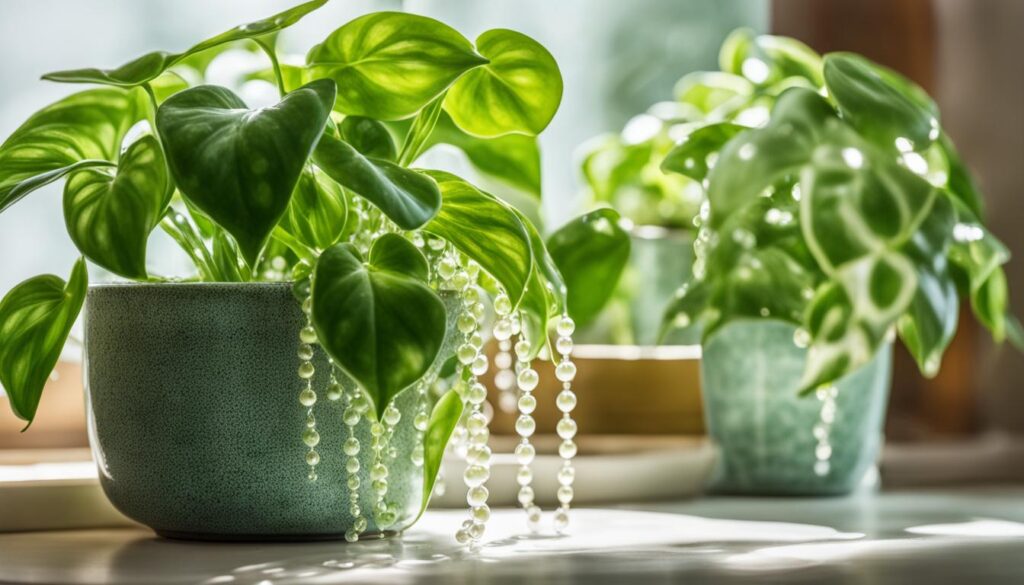
Rarity: Less common than some other pothos varieties but still available in the houseplant market.
Why People Love This Plant: People appreciate Pearls and Jade Pothos for its unique and eye-catching variegation, which adds a touch of elegance to indoor spaces.
Care Specifics:
- Light: Prefers bright, indirect light but can tolerate lower light conditions.
- Water: Allow the top inch of soil to dry between waterings.
- Temperature: Maintain a warm and moderately humid environment.
Cebu Blue Pothos
Appearance: Cebu Blue Pothos has elongated, narrow leaves that are a muted blue-green color. The leaves have a waxy texture and a slightly rippled appearance.

Rarity: Less common than some other pothos varieties due to its unique appearance.
Why People Love This Plant: People are drawn to Cebu Blue Pothos for its distinctive blue-green foliage, which sets it apart from other pothos varieties and adds a cool, calming presence to indoor spaces.
Care Specifics:
- Light: Prefers bright, indirect light but can tolerate lower light conditions.
- Water: Allow the top inch of soil to dry between waterings.
- Temperature: Maintain a warm and moderately humid environment.
Silver Satin Pothos
Appearance: Silver Satin Pothos features heart-shaped leaves with silvery-green variegation. The leaves have a velvety texture.

Rarity: Less common than some other pothos varieties but still available in the houseplant market.
Why People Love This Plant: People love Silver Satin Pothos for its unique silver sheen on the leaves, giving it an elegant and sophisticated look.
Care Specifics:
- Light: Thrives in bright, indirect light but can tolerate lower light conditions.
- Water: Allow the top inch of soil to dry between waterings.
- Temperature: Keep it in a warm and moderately humid environment.
Glacier Pothos
(Note: Glacier Pothos may refer to a specific variegated form of another pothos variety, so specific care can vary. It often describes pothos with white variegation on green leaves.)
Appearance: Glacier Pothos typically has green leaves with white variegation, creating a striking contrast. The leaves are heart-shaped and glossy.
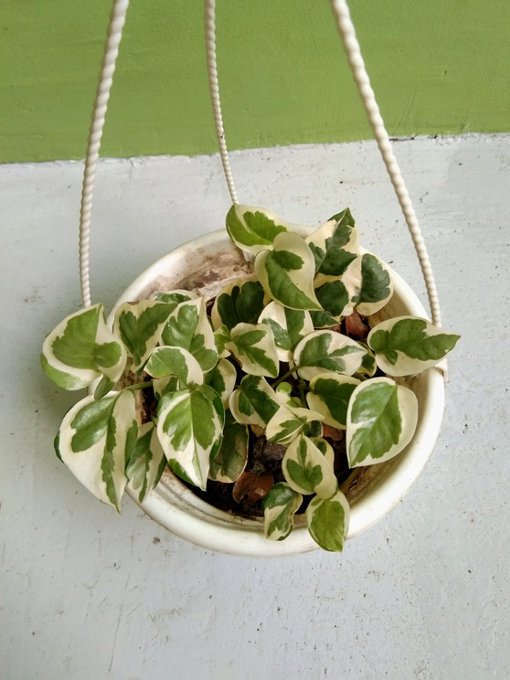
Rarity: Less common than some other pothos varieties due to its specific variegation.
Why People Love This Plant: People appreciate Glacier Pothos for its unique and beautiful white variegation, adding a touch of elegance to indoor spaces.
Care Specifics:
- Light: Prefers bright, indirect light but can tolerate lower light conditions.
- Water: Allow the top inch of soil to dry between waterings.
- Temperature: Maintain a warm and moderately humid environment.
Is Pothos a Good Indoor Plant?
Pothos plants are a fantastic choice for indoor plant enthusiasts, especially beginners. Not only are they visually appealing with their variegated leaves, but they also offer numerous benefits.
Pothos Plant History
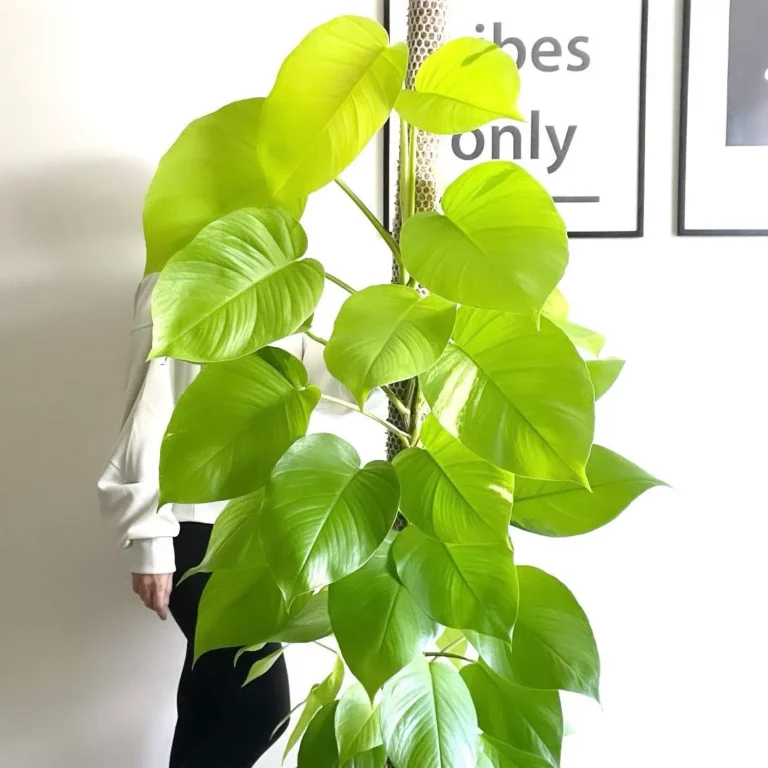
The history of Pothos plants dates back centuries, originating from tropical and subtropical regions in southeast Asia. These beautiful plants, scientifically known as Epipremnum Aureum, have been cultivated as houseplants and admired for their lush foliage in the Western world.
Pothos plants were prized for their aesthetic appeal and ease of care. Their vibrant green leaves and trailing vines became a favorite choice for adorning indoor spaces.
Over time, different varieties of Pothos plants emerged, each with its unique characteristics and colors. From the classic Golden Pothos with its striking yellow variegation to the elegant Marble Queen Pothos with its white and green leaves, Pothos plants have captured the hearts of plant enthusiasts around the world.
The Western world embraced Pothos plants as versatile and adaptable houseplants.
- Their ability to purify the air by removing toxins and volatile organic compounds made them popular choices for indoor spaces.
- Pothos plants became a symbol of greenery and tranquility in homes and offices.
- As their popularity grew, Pothos plants became readily available in nurseries, garden centers, and online stores.
Today, Pothos plants continue to be cherished as beloved houseplants, known for their low-maintenance nature and resilience. Whether kept in hanging baskets or placed on shelves, Pothos plants add a touch of natural beauty to any space.
Their long trailing vines not only create an attractive display but also offer the opportunity for propagation, allowing plant lovers to share the joy of Pothos plants with friends and family.
How to Buy a Pothos Plant

When it comes to buying a Pothos plant, it’s crucial to find a reputable source that guarantees healthy and high-quality plants. Here are some essential tips to consider:
- Research Reputable Sources: Look for well-established nurseries, garden centers, or online plant retailers with positive reviews and a good reputation. This ensures that you are purchasing from a trustworthy source.
- Inspect Plant Health: Examine the Pothos plant carefully for signs of good health. The leaves should be vibrant, without any yellowing, browning, or wilting. Check for pests or diseases by inspecting the foliage and stems.
- Consider Plant Size: Pothos plants come in various sizes, from small starter plants to larger, more established ones. Consider the available space in your home or office and choose a size that fits well.
- Compare Pricing: Compare prices from different sources to ensure that you are getting the best deal. While it’s important to consider cost, prioritize the health and quality of the plant over the price alone.
Additional Tips for Buying a Pothos Plant
- Check the Roots: Lift the plant gently from its pot to inspect the roots. Healthy roots should be white, firm, and well-developed. Avoid plants with mushy or rotten roots.
- Consider the Potting Mix: A good quality potting mix promotes healthy plant growth. Look for plants potted in well-draining soil that retains moisture without becoming waterlogged.
- Ask for Care Instructions: If available, ask the seller for specific care instructions for the Pothos plant you are purchasing. This can help you provide optimal care right from the start.
- Take Advantage of Sales: Keep an eye out for sales or discounts on Pothos plants. However, be cautious of heavily discounted plants that may have underlying health issues.
Caring for Your Pothos Plant
Proper care is essential for the health and well-being of your Pothos plant. By understanding the specific care requirements, you can ensure that your plant thrives and continues to beautify your space.
Here are some key aspects to consider when caring for your Pothos:
Watering:
Pothos plants prefer slightly moist soil but can tolerate some dryness between watering. It’s important to avoid overwatering, as this can lead to root rot. Allow the top inch of soil to dry out before watering again. Be sure to use well-draining soil and pots with drainage holes to prevent waterlogging.
Light Requirements:
Pothos plants are adaptable and can thrive in various light conditions. However, they prefer bright, indirect light. Avoid placing them in direct sunlight, as this can scorch their leaves. If your Pothos is not getting enough light, it may become leggy or develop smaller leaves.
Temperature:
Pothos plants prefer temperatures between 60-85°F (15-29°C). They can withstand slightly cooler temperatures but are sensitive to cold drafts. Avoid placing them near doors, windows, or air conditioning vents that can expose them to chilly drafts.
Fertilizing:
Feed your Pothos plant every 2-4 weeks during the growing season (spring and summer) with a balanced liquid fertilizer. Dilute the fertilizer to half-strength to prevent fertilizer burn. During the dormant season (fall and winter), reduce or stop fertilizing.
Repotting:
Repot your Pothos plant every 1-2 years or when it becomes root-bound. Choose a pot that is one size larger and use fresh, well-draining soil. Gently loosen the roots before placing the plant in the new pot and filling it with soil. Water thoroughly after repotting.
Pruning:
Regular pruning helps maintain the shape and appearance of your Pothos plant. Trim back overgrown vines or yellowing leaves using clean pruning shears. You can also propagate the cuttings to grow new Pothos plants.
Toxicity:
Keep in mind that Pothos plants are toxic to pets and humans if ingested. Ensure they are placed out of reach of children and pets to prevent accidental consumption.
Propagation:
Propagation is a fun and easy way to expand your Pothos collection. You can propagate Pothos plants through stem cuttings or by dividing the root ball. Place the cuttings in water or moist soil until they develop roots, and then transfer them to their own pots.
Common Pothos Problems
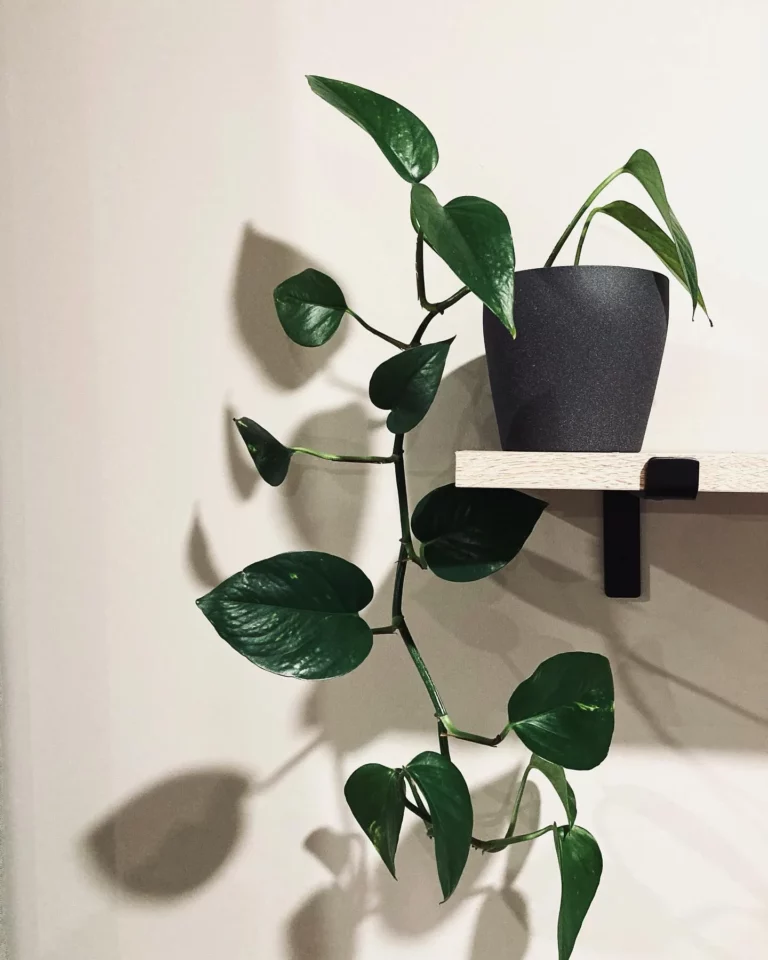
As much as I love my Pothos plant, I’ve experienced a few common issues that can arise. One of the most common problems is yellow leaves. If you notice your Pothos leaves turning yellow, it could be due to overwatering or lack of sunlight. Adjusting the watering schedule and ensuring your plant gets adequate light can help resolve this issue.
Brown or black spots on Pothos leaves can also be a cause for concern. These spots are often a sign of fungal or bacterial infections. To prevent the spread of disease, remove affected leaves and ensure good air circulation around the plant. Avoid overwatering and allow the soil to dry out between waterings to minimize the risk of fungal growth.
Other common issues include root rot, pests, and nutrient deficiencies. Root rot can occur if the Pothos plant is sitting in waterlogged soil. To prevent this, make sure the pot has proper drainage and avoid overwatering. Pests such as spider mites and mealybugs can be a nuisance, so regularly inspect your plant for signs of infestation and treat with appropriate pest control methods. Lastly, nutrient deficiencies can cause stunted growth and discolored leaves. Providing a balanced fertilizer according to the recommended dosage can help keep your Pothos plant healthy and thriving.
Remember, troubleshooting these problems promptly can help save your Pothos plant and ensure its longevity. By paying attention to the health of your plant and providing the necessary care, you can enjoy the lush green beauty of your Pothos for years to come.
FAQ
Why are Pothos plants so popular as houseplants?
Pothos plants are popular houseplants due to their easy care, beauty, and ability to purify the air.
What are the different varieties of Pothos plants?
Pothos plants come in various varieties, including Golden Pothos, Marble Queen Pothos, Neon Pothos, and Harlequin Pothos.
Are Pothos plants good indoor plants?
Yes, Pothos plants are excellent indoor plants due to their ease of care and beginner-friendly nature.
Where are Pothos plants native to?
Pothos plants are native to tropical and subtropical regions, primarily in southeast Asia.
How should I choose and buy a Pothos plant?
When buying a Pothos plant, choose a reputable source, look for healthy plants, consider the size that fits your space, and compare prices.
How do I care for my Pothos plant?
Proper care for a Pothos plant includes watering, providing adequate light, maintaining the right temperature, fertilizing, repotting, pruning, and being aware of its toxicity.
What are some common problems with Pothos plants?
Common problems with Pothos plants include yellow leaves, brown or black spots, and other issues. Troubleshooting tips can help resolve these problems.

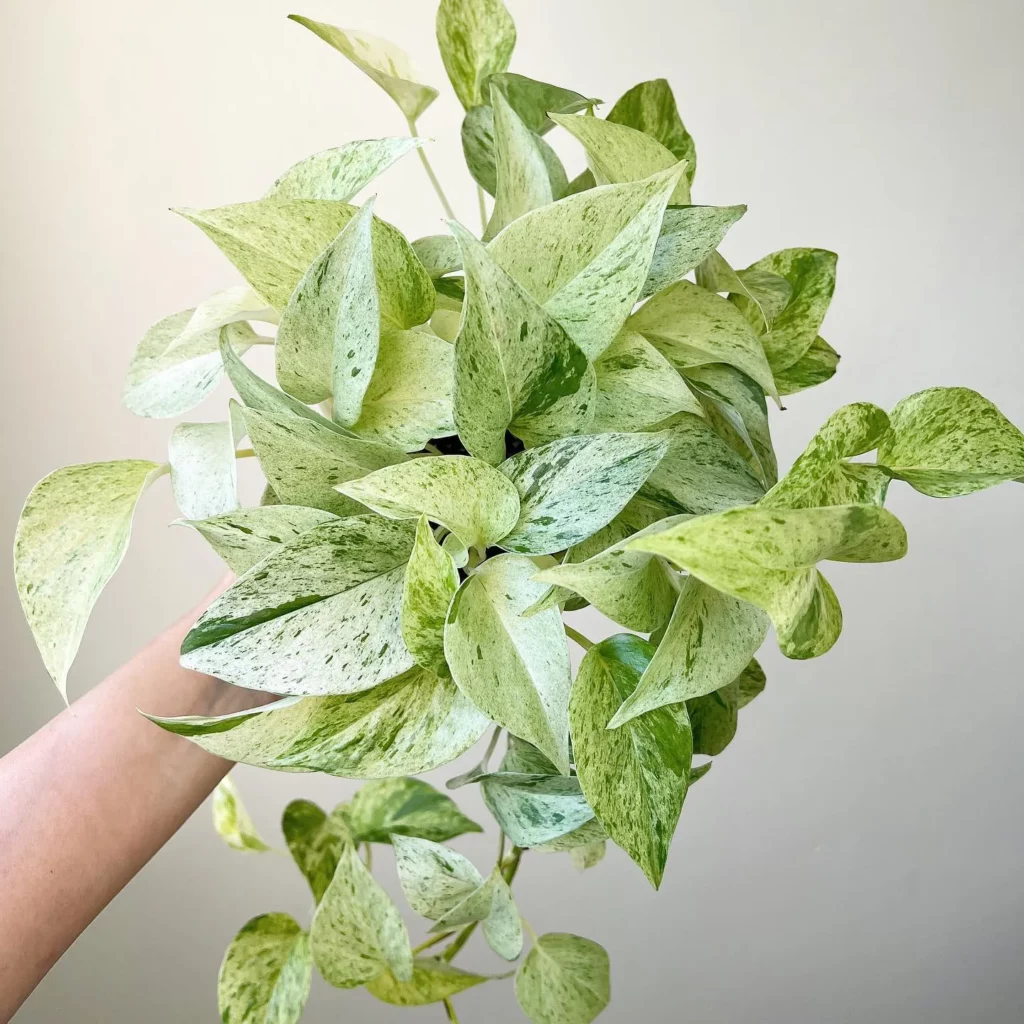
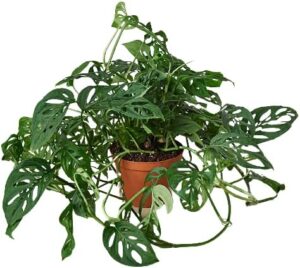
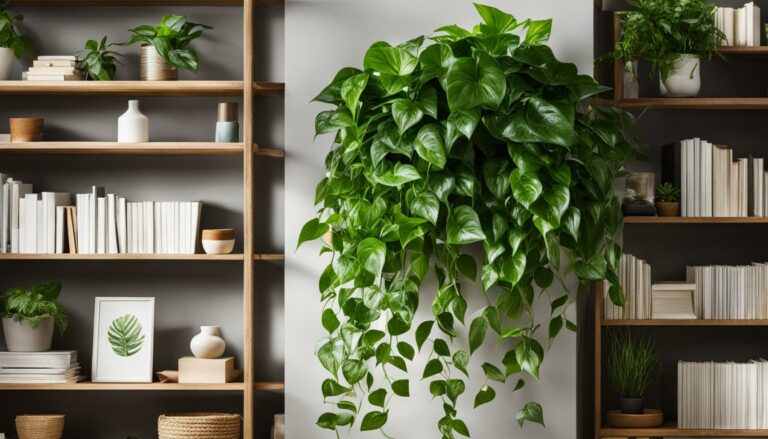
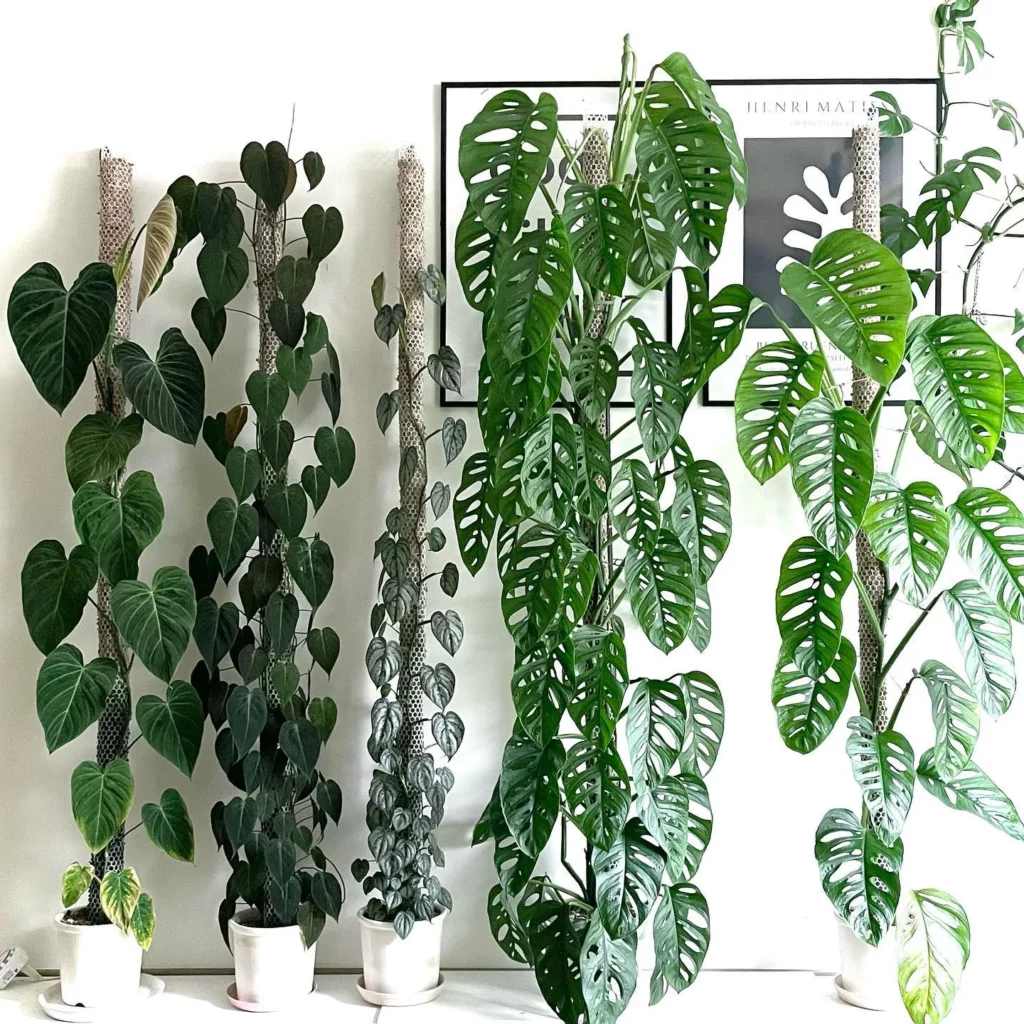
![Glacier Pothos 1 1024x585 1 | Bonsaimery.com Glacier Pothos Care Guide [Expert Guide] And Photos](https://bonsaimery.com/wp-content/uploads/2024/03/Glacier-Pothos-1-1024x585-1.jpg)
